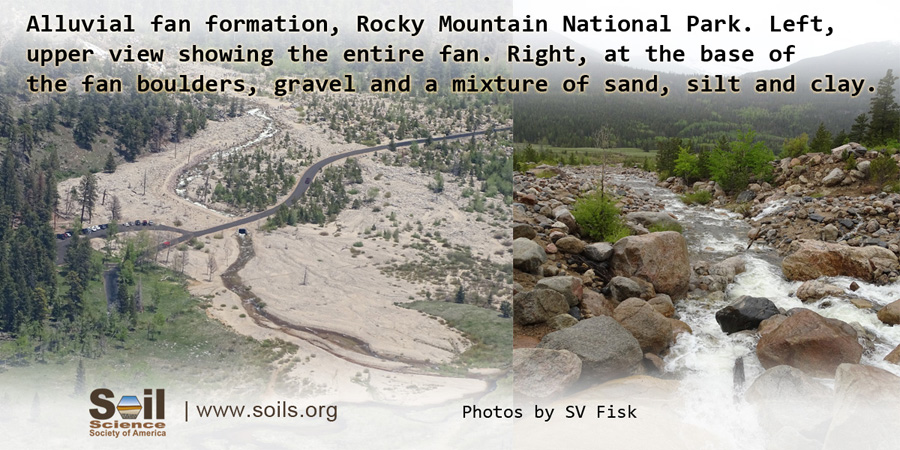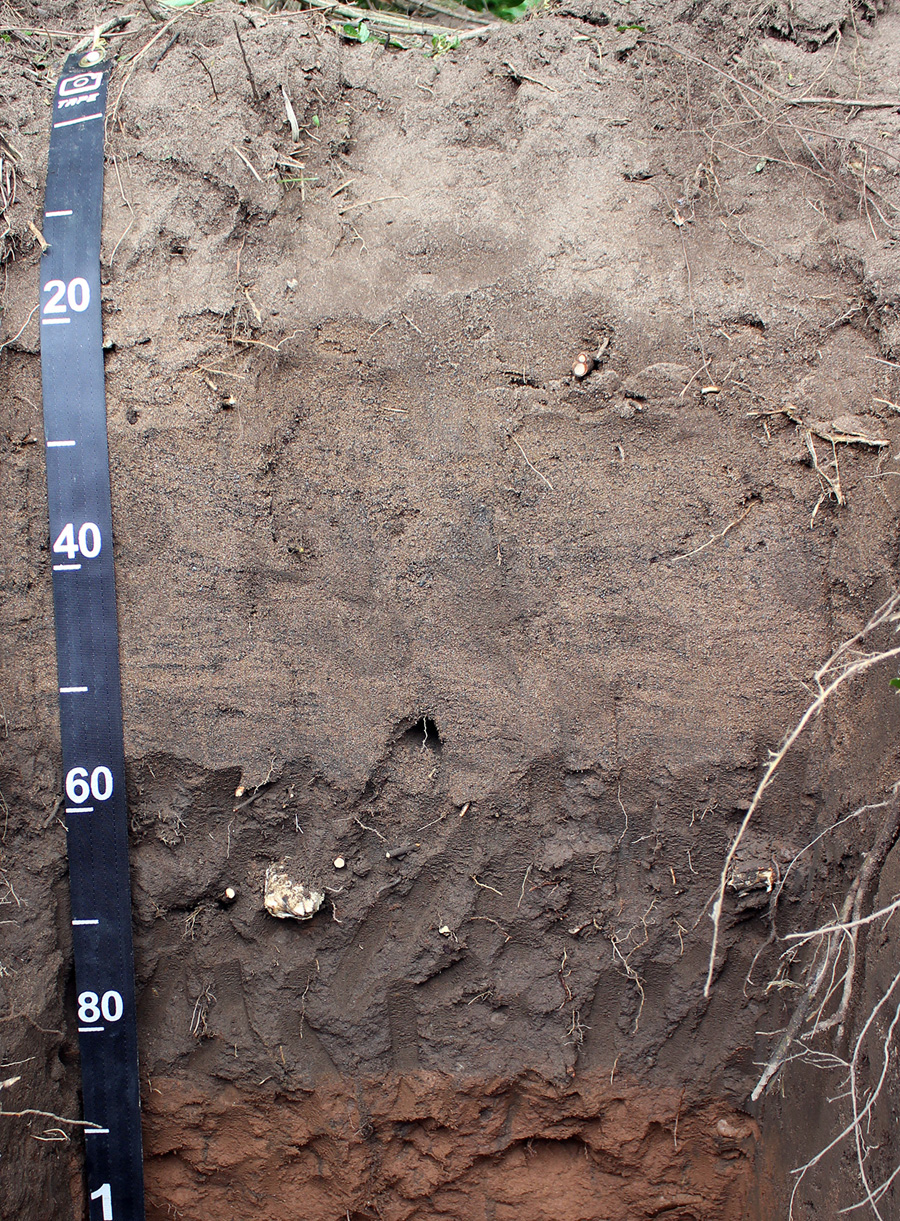Alluvial soils are soils deposited by surface water. You’ll find them along rivers, in floodplains and deltas (like the Mississippi Delta), stream terraces, and areas called alluvial fans. This last category results from larger floods, causing the soil to spread out in the shape of a triangle fan.
These soils are formed differently than many other soils, which are made through the long process of rock transformation that often takes millennia. You can learn more about that process in this blog.

Alluvial soils provide many functions, the greatest is serving as the earth’s kidneys. Alluvial soils remove sediments and nutrients flowing in the adjacent water. They can also remove other contaminants from rivers and improve water quality for downstream communities!
Because floods periodically deposit new sediment at the surface, alluvial soils can have a unique layered look. Dark and light colors alternate, along with assorted sizes of round gravel particles. This unique layering process is called stratification and is evident in many floodplains.
All alluvial soils form by flooding. The new sediment that is added comes from the stream watershed. And this is sensitive to changes in land use. Examples could be deforestation, plowing for agriculture, or disturbance during construction activities. These human activities can increase erosion of uplands, and the resulting sediment then flows downriver and is deposited.

Sometimes moving eroded soil and nutrients from one area to another can be good. Many ancient civilizations, like those in Mesopotamia and ancient Egypt, thrived on the banks of rivers. If not for the fertile alluvial soils deposited on the riverbanks, their agricultural societies would not have thrived.
In other cases, flood deposition can also bring contamination from upland pollution. Urban and industrial watersheds have an increased risk of floodplains containing potentially harmful chlorinated compounds and trace metals. Sometimes the pollution is very evident, with dead plant life and garbage on the soil surface. However, in other areas, the contamination cannot be seen. Soil testing is necessary in these cases.

In these cases, urban soils are trapping harmful pollution and preventing it from reaching downstream areas.
In many places around the world there are distinctly different soil colors, chemical properties, and human artifacts buried in floodplains. These allow scientists to reconstruct human occupation and land use history. In modern urban areas, alluvial soils contain discarded garbage that has been carried in with flood waters and buried. The most recent deposits at the surface typically contain abundant plastics. Deeper deposits contain older manufactured materials like glass, brick, and stone. Therefore, alluvial soils also represent critically important areas for archaeologists and soil scientists to date human occupation.
The next time you are on a floodplain remember that unique alluvial soils that form there provide many beneficial values to society: agricultural production, pollutant trapping, and preserving evidence of our own human history.
Answered by Matthew Ricker, North Carolina State University
To receive notices about future blogs, be sure to subscribe to Soils Matter by clicking on the Follow button on the upper right! Explore more on our webpage About Soils. There you will find more information about Soil Basics, Community Gardens, Green Infrastructure, Green Roofs, Soil Contaminants, materials for Teachers and more.

5 thoughts on “What are alluvial soils?”